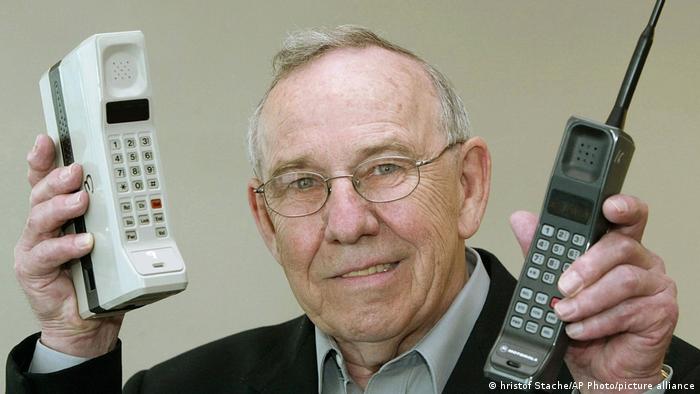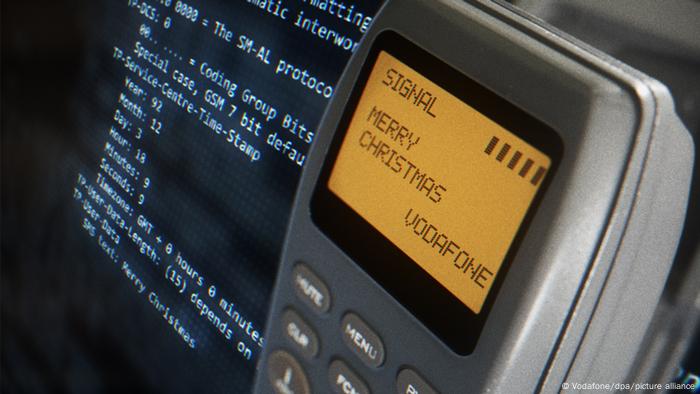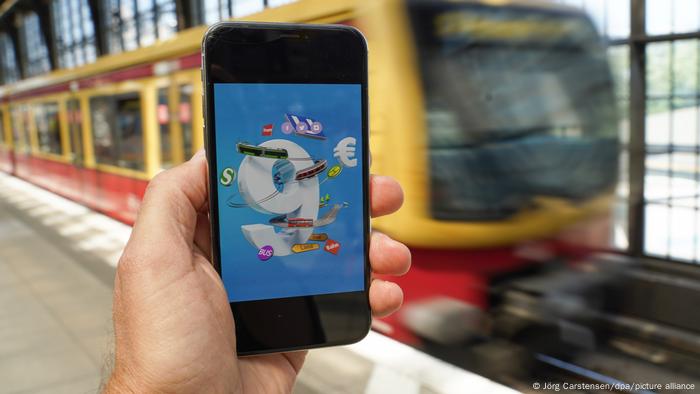The first mobile phones, which ushered in the mobile phone age 30 years ago, were as heavy as wholemeal bread. In the beginning, consumers didn't know much what to do with it. But that should change soon.
 < p>Rudy Krolopp, former chief designer at Motorola, with two cell phones from the old days
< p>Rudy Krolopp, former chief designer at Motorola, with two cell phones from the old days
The start of modern mobile communications 30 years ago in the summer of 1992 was a difficult birth. The post minister at the time, Christian Schwarz-Schilling (CDU), had already issued the first licenses for digital mobile networks to Deutsche Telekom (D1) and the Mannesmann Group (D2) in December 1989.
But it took several months to technically prepare the start of operation of the two D networks, to set up radio masts and transmitters. Above all, there was a lack of suitable mobile phones.
Telekom tricked
On July 1, 1992, Telekom finally invited people to the official launch of its D1 network. Mannesmann Mobilfunk originally wanted to start broadcasting two weeks later. However, in a PR coup, the D2 start was spontaneously brought forward to June 30, 1992, in order to be one day ahead of the competitor Telekom in the history books.
D2-Private was able to offer its customers didn't even sell cellphones themselves at that point in time. The first D2 customer came from Bochum and had previously bought one of the first “mobiles” based on the GSM standard, an Ericsson GH-172, in an electronics store.

Transmission masts are the visible part of the cellular infrastructure, here a 5G cellular mast from Vodafone
Lots of money for a piece of bread
The legendary, wholemeal-bread-sized “bone” soon prevailed on the market, the Motorola International 3200. Today's head of technology at Vodafone Germany, Tanja Richter, remembers: “The bulky phone weighed more than 500 grams, had a Battery capacity for a maximum of 120 minutes of talk time and cost around 3000 DM. That was a small fortune for the time.”
Richter started her career at Mannesmann Mobilfunk and came to Vodafone with the company takeover in 2000. At first only a few people in Germany could share the early enthusiasm for digital mobile communications, also because the prices were very steep.
Telekom and Mannesmann started out with minute prices of just under 2 Deutschmarks, or around 1 euro today. The basic fee was more than 70 Deutschmarks. Flat rates that only cost a fraction are common today.
Early hardware shortage
In April 1993, just under a year after the start, several hundred thousand participants were already on the move in the two D networks. And the growth could have been much more dynamic if only there had been enough mobile phones. Mannesmann's head of technology at the time, Georg Schmitt, translated the abbreviation for the digital mobile phone standard GSM (Global System for Mobile Communications) with the deep sigh “God send Mobiles!”.
But mobile phones didn't just fall out of the sky , but had to be obtained from Motorola, Ericsson, Nokia, Siemens and others. But at least the prices went down. And a new service made mobile phones particularly attractive to young people. We are talking about SMS (Short Message Service) with its 160 characters.

This is what it looked like, the first SMS in history: One small step for Richard Jarvis, one giant leap for mankind
The first SMS with the message “Merry Christmas” went to Vodafone on December 3, 1992 -Employee Richard Jarvis. In 1994 Mannesmann and Telekom introduced SMS for their customers. Five years later, Germans were already sending around 3.6 billion text messages. The Duden gave up and took the word “texting” into his vocabulary.
A huge market
In 1999 alone, the number of mobile phone customers in Germany doubled to 48 million. The success finally cost Mannesmann his independence: the British giant Vodafone took over the Düsseldorf company in 2000 after several months of defensive fighting at a price of 190 billion euros.
In the mid-1990s, two more mobile communications licenses were issued in Germany – the E-networks were created with the providers E-Plus and Telefónica O2. E-Plus came under the umbrella of Telefónica in 2014, so that the duopoly of the early years has since developed into a neck-and-neck race between three providers.
And with the auction of the licenses for the fifth generation of mobile communications (5G), 1&1 Drillisch, a new player, entered the stage in 2019, but has not yet set up its own network. The market as a whole is huge: last year the number of mobile phone connections in Germany rose to 161 million, so that in purely mathematical terms there are almost two connections for every person.

Thin, light, trendy – the current market changer from Apple
Swirled the market
The premiere of the iPhone in 2007 proved to be a decisive moment in the history of digital mobile communications. The first iPhone only transmitted in the comparatively sluggish EDGE network. However, the “Jesus Phone” by Apple co-founder Steve Jobs helped smartphones make a breakthrough with innovative functions and a new type of user interface.
The iPhone also changed the balance of power – from the providers to the device manufacturers in the USA and Asia. With the first Samsung Galaxy, the duel between the iPhone and Google's Android operating system began in 2009, and it still shapes the smartphone world today.
The success of free messengers such as WhatsApp, Facebook Messenger, Apple iMessage, Signal, Telegram, Line and Threema also had a no less drastic effect on the business of mobile phone providers. They outstripped SMS years ago and wiped out a billion dollar business.

Buy now Public transport passengers buy their tickets shortly before boarding – by smartphone of course
Battle of the providers
For this reason, today's mobile phone companies have to look for economic success not only in their core business, but also in other areas. After all, the web shops and shops of Telekom, Vodafone and Telefónica, which sell mobile phones and the associated additional services such as mobile phone insurance, flush a lot of money into the coffers.
At the same time, the providers are making a new attempt at economic success of the big Internet corporations to be appropriately involved. In a joint appeal in mid-February, Deutsche Telekom, Vodafone, Telefónica and the French provider Orange called on the major platforms to partially assume the costs of the European digital infrastructure.
Data traffic increases every year, according to the Appeal to increase by up to 50 percent – and video streaming, gaming and social media accounted for over 70 percent of all traffic. These platforms would benefit from highly scalable business models at low cost. But it remains to be seen whether the providers will ever see money from the big internet providers.